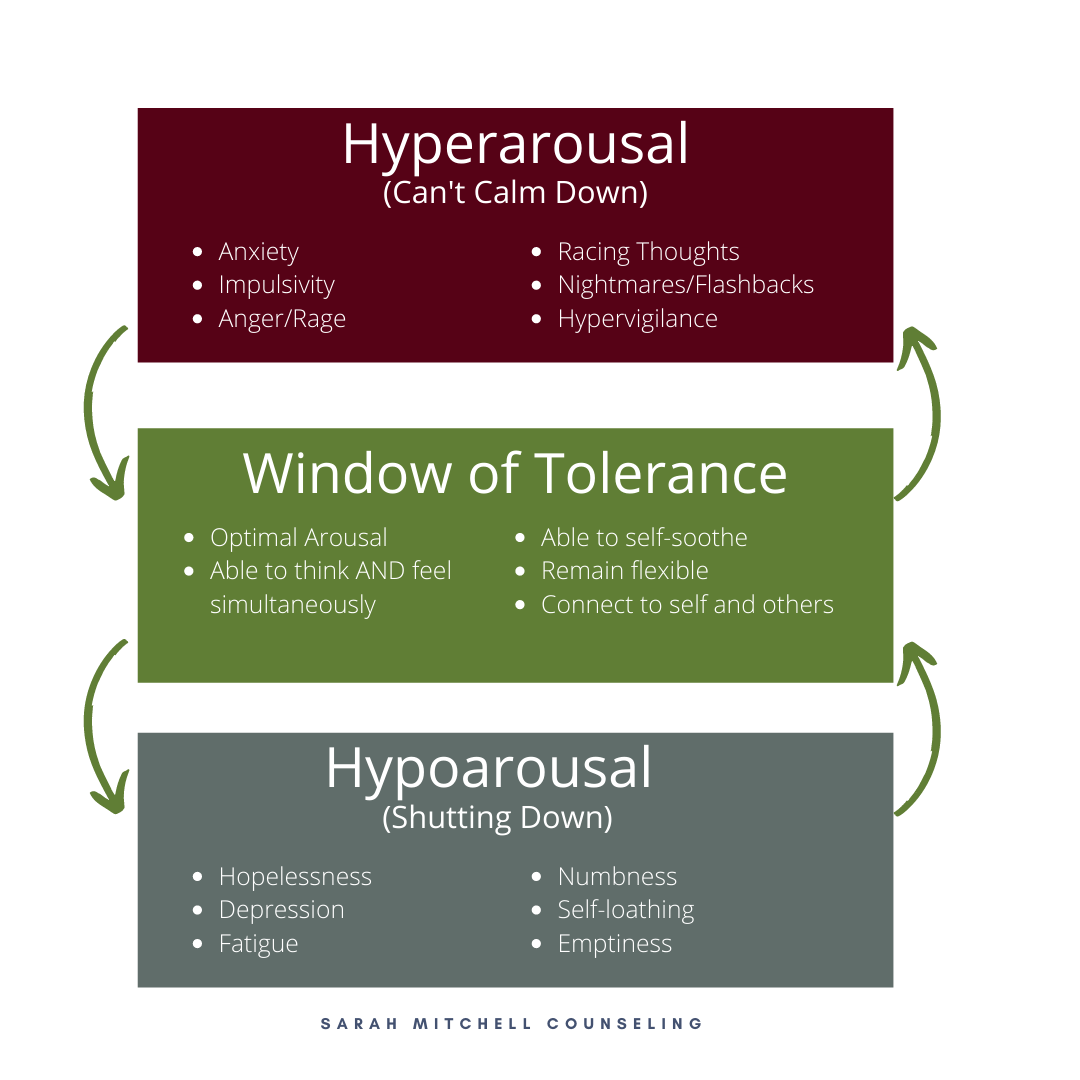What is the Window of Tolerance?

Ever feel angry, overwhelmed, or out of control? Maybe hopeless, depressed, or numb? Grow your awareness of your reactive patterns to cultivate curiosity and compassion and begin to find healthier responses by understanding the Window of Tolerance.
The window of tolerance refers to our ability to tolerate difficult experiences or emotions. Often we have learned patterns of response that cause us to react in protective, but ultimately unhealthy ways. As you read about the different response patterns, cultivate curiosity for your own tendencies and compassion to see how these reactions are often adaptive strategies to survive a traumatic event or threat.
Hyperarousal (Can't Calm Down)
This common "I can't calm down" response to a negative experience or emotion can be thought of like a revving engine: the body is getting energized to respond to a situation in a defensive way. The thinking, decision-making part of the brain slows down to enable quicker reaction in what is often called the fight or flight response. This may be experienced as an adrenaline or cortisol rush, perhaps feeling shaky, often anger, rage, or anxiety levels rise, actions become more impulsive. Sometimes engaging in safe, intense exercise for a short time helps discharge the adrenaline and cortisol. At other times, taking slow deep breaths, grounding ourselves in the present can help the body begin to slow down and re-regulate.
Hypoarousal (Shutting Down)
This response is also a natural reaction to big events or emotions that feel outside of our control. It can be thought of like a cell phone that overheats in a hot car so that it shuts down in order to protect the device. Once again the thinking, decision-making part of the brain slows down this time in an attempt to deflect feeling the heaviness of the emotions or situation. This response is often called the freeze response, and can be experienced as numbness, hopelessness, depression, fatigue, or self-loathing. Drinking cool water, lengthening our spines or moving gently, can help begin to bring us back to a regulated state.
Optimal Arousal (Window of Tolerance)
Optimal arousal describes the ability to simultaneously think AND feel. The other two responses tend to shut down the thoughtful part of our brain, in this type of response, we are able to keep both our "rational" brain and our "emotional" brain "online". This means that when a big emotion hits, we are able to tolerate the feelings, remaining flexible and connected to ourselves and others. This does not mean that we never experience distress, but that we are able to soothe ourselves when we do experience distress. Cultivating mindfulness (the ability to be aware of the present moment without evaluation or judgment) through activities such as meditation, contemplative prayer, rhythmic movement such as yoga or focused walking, supports expanding the window of tolerance.